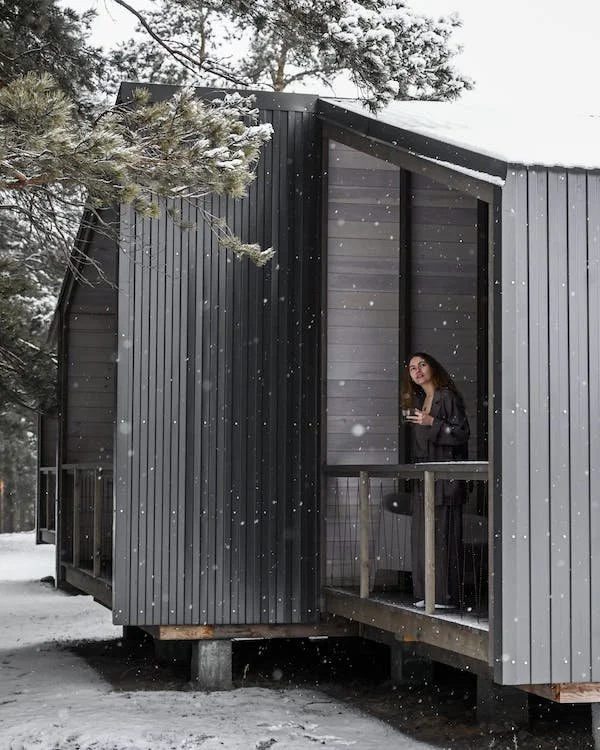The Ultimate Guide to End of Lease Rubbish Removal
RH Business Marketing Solutions
For all renters, there comes a time when you are approaching the end of your lease.
If you intend to, or have been asked to vacate the property, it can be a stressful time. Not only do you have to find somewhere else to live, but you also must ensure you leave your current rental property in an acceptable enough condition to get your full bond back.
For this reason, in addition to cleaning, end-of-lease rubbish removal is a necessary task for tenants to undertake. However, as anyone who has ever moved out of a rental property will tell you, it can be a challenging, time-consuming and darn right frustrating process.
In this article, we will discuss the reasons for end-of-lease rubbish removal, how to set about doing it, and provide you with some tips to make it a stress-free experience.
The importance of end-of-lease rubbish removal
There are several reasons why it is important to perform end-of-lease rubbish removal.
Firstly, it is a critical step in protecting your security deposit, as well as avoiding legal action. But beyond that it also creates a positive impression with your real estate rental agency who may be willing to rent out another property to you.
Furthermore, end of lease rubbish removal can also help you practice environmental sustainability and even save you time and money if planned properly.
When is the best time to get in contact with a rubbish removalist?
The best time to start an end of lease rubbish removal depends on the size of property you have been leasing. But as a rule, the more time you can give yourself to do it the better.
Four to six weeks prior to your lease ending is generally considered a good lead in time to start the process. This will give you enough time to declutter, clean, sell and dispose of any rubbish in a safe and efficient manner.
By contrast, waiting until a couple of days before your lease runs out to start the project can be very stressful and result in a rushed or incomplete job – which could impact upon the amount of your bond you get back.
How to declutter your end-of-lease property
Knowing when to begin is one thing, but doing it is another thing entirely. For this reason, it is worth having a clear strategy on how you will declutter your rental property, in order to facilitate an end-of-lease rubbish removal process.
Here are some tips for decluttering your property:
Create a plan: Start by making a list of the items you need to declutter and the rooms they are located in. This will help you stay organized and focused on your goal.
Tackle one room at a time: Don't try to declutter the entire property at once. Instead, focus on one room at a time to avoid feeling overwhelmed.
Decide what to keep, sell, donate, or dispose of: For each item, decide whether you want to keep it, sell it, donate it, or dispose of it. Keep only what you really need and sell or donate items that are in good condition.
Get rid of duplicates and items in poor condition: If you have multiple items that serve the same purpose, keep only one and get rid of the rest. Also, dispose of items that are broken, worn out, or no longer useful.
Store items you need to keep: If you have items you need to keep but don't have room for in your new property, consider putting them in a storage unit until you have space for them.
Donate items to charity: Donating items to a local charity is a great way to declutter your property and help those in need. Here are some charities that will pick up your unwanted items for you.
Sell items online: You can sell items you no longer need on platforms such as eBay, Facebook Marketplace, Depop or Gumtree.
Dispose of items properly: Make sure to dispose of items in an environmentally responsible manner. Be mindful that some items, such as electronics and hazardous waste, may need to be disposed of at a special facility.
Cleaning
Decluttering your property is not just about removing rubbish; it's also about creating a clean and organized space that you can be proud of.
Once the property has been decluttered, tenants should then focus on cleaning.
This includes thoroughly wiping down surfaces, cleaning the bathrooms and kitchens, and vacuuming or sweeping the floors. This will ensure the property is left in a spotless and tidy state.
Get the professionals in
One of the biggest challenges of end-of-lease rubbish removal is disposing of large items such as furniture and appliances.
Unfortunately, most local councils will not accept these items for curbside collection, so tenants will need to arrange for alternative disposal. This can include taking the items to a landfill or recycling centre or hiring a rubbish removal company to collect and dispose of the items.
Hiring a rubbish removal company is often the easiest and most convenient option for tenants. These companies have the expertise and equipment to safely and efficiently remove large items, and they will also handle the disposal of the items, ensuring this is done in an environmentally responsible manner.
Organize your end of lease rubbish removal with 1300 Rubbish or another similar company. Just make sure you choose one that is experienced, reliable, and insured.
Tenants should also ensure that the company is familiar with the rules and regulations for disposing of certain items, such as hazardous and electronic waste.
It is also worthwhile checking out online reviews from previous customers to gauge the quality of service they offer.
As touched upon above, tenants can also reduce the amount of rubbish that needs to be disposed of by recycling and repurposing items. This can include donating items that are still in good condition to charity, or selling items that have value.
By doing this, tenants can reduce the amount of waste that ends up in landfill and help to protect the environment.
What items can they remove?
It is worth checking with individual removal companies about what items they can help you remove.
But typically, you can expect most businesses to be able to shift bed frames and mattresses as well as items like carpets, household appliances, TVs, furniture and lounges.
They should also be able to dispose of wood, garden waste and household rubbish for you as well.
Conclusion
While end-of-lease rubbish removal is a necessary task for tenants, it does not have to be a stressful experience.
By following the tips outlined in this article, tenants can ensure that the process is smooth and efficient, and that the property is left in a clean and tidy state.
With careful planning and preparation, you can also reduce the amount of waste that ends up in landfill and help to protect the environment.
So, if you are facing the end of your lease, remember to start preparing for end-of-lease rubbish removal well in advance, and take advantage of any resources and services available to make the process as stress-free as possible.
Guest Contributor: Rebecca Lee

















